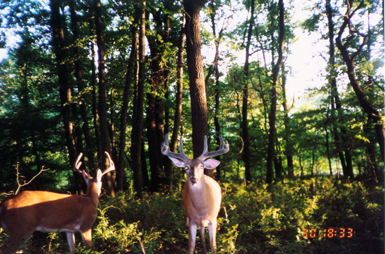
Population estimation of white-tailed deer is an important cornerstone for the development of deer management strategies. However, estimating deer populations in heavily forested regions is difficult because of reduced visibility. Traditional survey methods, including spotlight counts and aerial surveys, provide limited results in dense forests. So now what?
The use of game cameras, or trail cameras, can provide photo records of an individual deer, a deer herd, and important parameters such as population estimates, sex ratios, and productivity. In an attempt to estimate a deer herd using game cameras, a census project was carried out in 2004 in the piney woods of east Texas, on a property 1,002-acres in size. A total of 7 cameras were placed out (1 trail camera per 150-acres) from September 2 to September 12.
A total of 158 photographs of deer were taken during that time. Twenty-three buck, 97 doe, and 48 fawn photos were collected/observed. Of the 23 total buck observations, 15 individual bucks were identified. The buck to doe ratio was calculated to be 1 buck:4.2 does (23 bucks:97 does). Since 15 individual buck photos were taken, 15 was multiplied by 4.2 to give a doe population size of 63 animals. Continue reading “Using Game Cameras to Survey White-tailed Deer”